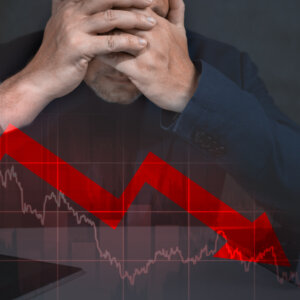View historical precious metals price charts »
View historical precious metals price charts »
- May 16, 2023 -
By Lisa Murray-Roselli
Coin collecting is one of the easiest and most enjoyable ways to get involved in the precious metals industry. You can learn about fascinating moments in history and have a tangible piece of the past right in your own hands. In addition, a large collection can be a valuable asset. Investing in precious metals futures is a more involved yet worthwhile way to learn about the industry and advance your investment portfolio. However, especially with the advent of online investing, both enterprises can be risky without proper guidance and preparation.

Counterfeit after Louis the Pious solidus, 9th century AD
Counterfeit coins, on the other hand, are generally cast, as this is a less expensive method of production. Molten metal is poured into a mold created from the impression of an authentic coin. Melting the metal causes it to expand—air trapped inside the metal results in bumps or holes in the coin. In addition, molten metal is less dense than a slightly heated blank, yielding a lighter coin, and it does not reach all of the crevices of the mold, creating an image that is less defined. Even very worn authentic coins have sharper imagery than their imposters. Cast coins are made from 2 parts pressed together, resulting in a casting seam and sharp edges. Counterfeiters often shave away this seam, but the sharp edges remain. Patina is another element that should be tested for authenticity.
These common marks and imperfections can be used by dealers and buyers to identify true ancient coins. Experienced buyers recommend becoming familiar with the look and, if possible, the feel of true ancient coins—museum websites have numismatic (study or collection of currency, including coins, tokens, paper money, medals and related objects) collections and many can be viewed online, such as this one at the British Museum. Credible dealers follow industry guidelines, use legitimate sources, and provide accountability statements that guarantee authenticity for a lifetime and refunds for counterfeits. They should also be members of a numismatic association, charge prices commensurate with the premiums needed to maintain a proper business, and never pressure buyers to make a purchase before viewing the object in person.

Examples of counterfeit coins in the Norwegian National Museum of Justice, Trondheim [Photo Source]
Collecting coins can be a fascinating pastime and a valuable investment when approached with enthusiasm, patience, and a keen eye.
Investing in precious metals futures takes a whole other set of skills and resources, but no less diligence. In 2020, JPMorgan was made to pay $920 million for manipulating precious metals futures and Treasury securities. Between 2008 and 2016, JPMorgan traders repeatedly and with intent participated in a pattern of placing orders on one side of the market, which they never intended to execute, resulting in the deceptive impression that interests were being bought or sold, that is, the presence or absence of demand. This “spoofing” drove prices up or down, according to traders’ intended settlement.
The Commodity Futures Trading Commission (CFTC) found that, even though JPMorgan’s in-house surveillance system identified problems in 2014, they made no attempts to identify, investigate, and halt the illegal activity. With irrefutable evidence collected by the CFTC, JPMorgan admitted wrongdoing and, along with paying out fines and settlement, six traders were charged with manipulating metals futures. Although the CFTC is making efforts to come down hard on these fraudulent practices, in this case, corrupt traders at this bank got away with spoofing for at least 8 years.
 Precious metals investment scams can also be outwardly targeted—retirees are often victims of these schemes. In the largest joint action between federal and state regulators, the CFTC and 30 states filed a lawsuit against Metals.com and its parent company, TMTE in September of 2020. Taking advantage of pandemic-related anxieties, the sales force of Metals.com defrauded $185 million from approximately 1,600 investors, most of whom were elderly. They used fear tactics and, among other ploys, impersonated Fox News on Facebook, touting “Deep State” messaging and threats of stock market collapse. Salespeople illegally presented themselves as investment advisers and were deceptive about significant markups.
Precious metals investment scams can also be outwardly targeted—retirees are often victims of these schemes. In the largest joint action between federal and state regulators, the CFTC and 30 states filed a lawsuit against Metals.com and its parent company, TMTE in September of 2020. Taking advantage of pandemic-related anxieties, the sales force of Metals.com defrauded $185 million from approximately 1,600 investors, most of whom were elderly. They used fear tactics and, among other ploys, impersonated Fox News on Facebook, touting “Deep State” messaging and threats of stock market collapse. Salespeople illegally presented themselves as investment advisers and were deceptive about significant markups.
Although these examples may give you pause when it comes to investing in precious metals markets, there are many precautions you can take in order to make investing less risky. The CFTC, US Department of Justice, and even AARP have website content that offers guidance for avoiding fraud in the precious metals markets. Their advice is similar to that of vetting coin dealers: verify brokers’ qualifications, registration status (most have to be registered with national or government organizations), and history. Look for reviews and complaints, get everything in writing, be aware of your rights and of fees or commissions, and ask for guidance from a variety of sources before making a financial commitment. And as for phone solicitations, the general advice is to simply hang up.
The precious metals industry can provide both a link to the past and an indication of where the world is headed, both economically and politically. Fraud is an ever-present danger in most industries, but with robust guidance and precautions, investing in precious metals can be a lucrative and exciting venture.